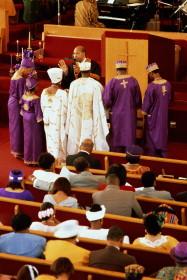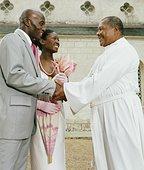Why an African Ceremony?
The ceremony renews the bond between the community and nature. The ceremony is traditionally conducted in the the open, preferably in nature. This is designed to create the bond between people and the cosmos, i.e. the stars, moon, sun and the universe. The wedding ceremony becomes a conduit between the unseen world and the seen world. In an African way of life, ceremonies and rituals triggers the subtle energies from the world of spirit to bless the occasion and propel the marriage towards its final pre-destined destiny.
What happens during the Ceremony?
During the ceremony everybody present participates. The energy of the ceremony is created by the contribution of each individual. It is considered the fuel that fires the ceremony. As the couple is matrimonially joined the families of the bride and groom are also joined as one. During the ceremony parents of the couple are openly acknowledged for their role in raising their kids.
When other couples attend the ceremony, they also bring their marriages to the altar to be renewed and reinforced. As the couple do their vows to each other, the rest of the married couples also get an opportunity of renewing their vows.
Sacred songs, dances, praise-songs related to fertility, prosperity, health are rendered to bless the occasion. Sacred Garments are worn. Each ethnic group possessing and using their own uniqueness style. African wedding ceremony embodies sacred symbols, that will always remind the couple of their commitment to each other.

The Ceremony: Sacred Symbols used
The Sacred Pond~ Purification ritual-The groom will walk through an illumined isle up to a pond - the isle is lit in seven different colors representing seven energy points (similar to the notion of chakras). He stands quietly for a few minutes taking seven deep breaths as a cleansing ritual. There after the groom washes his hands as a symbol of releasing all impediments to their joy and the forgiveness of each other for any past transgressions. In this way the marriage enters a state of being re-born by using water as the vehicle of forgiveness and cleansing. Water in African tradition symbolizes purity.
The Sacred Circle of Intent (Commitment)-After purification of their minds and souls, they step into the sacred circle of commitment which represents the Kraal (village). The Bride is led by her father into the circle and officially handed over to the groom. Drums resound with joy witnessing the sacred handover.
The Sacred Altar (Exchange of vows)- The Brides couple then move hand in hand towards the alter which represents the inner alter where the officiate is ceremoniously waiting. it is here at the Altar where the couple exchange vows.
Presentation of the spear- The spear is presented to the bride by her father as a symbol of authority and equality. The wife being the protector of the family values, culture, and off-springs. It is a symbol of becoming the queen of the family.
Presentation of the Rod Power " Induku"- This is a wooden object similar to a walking stick (sometimes with a knob on the end) that is presented to the groom by his father as symbol of the protector of the community language, culture and the protector of his home from enemies and dark forces. This is a magic wand that repels dark forces. It is symbol of equality, and that of the king.
Matrimonial Ceremony ( THE HIGHLIGHT)- This is the peak of the ceremony. In an African Wedding ceremony there is no paperwork. Vows are released to the HEART OF GOD and couples heart.
A ROCK. A rock would have been carefully pre-selected from a sacred river, cleaned and blessed by indigenous priests and priestesses. It symbolizes solidity - God the creator and the firm foundation of their home. Their fingertips on the rock serves as their signatures to the marriage. The rock will be handed over to the couple to be kept in a safe place. When they encounter challenges in the marriage, the sacred rock is used as a reminder of their vows and to heal their marriage. The rock becomes a "Talisman" for their marriage.
Conclusion
The marriage is concluded in a ceremony of dance, music, poetry and song.



